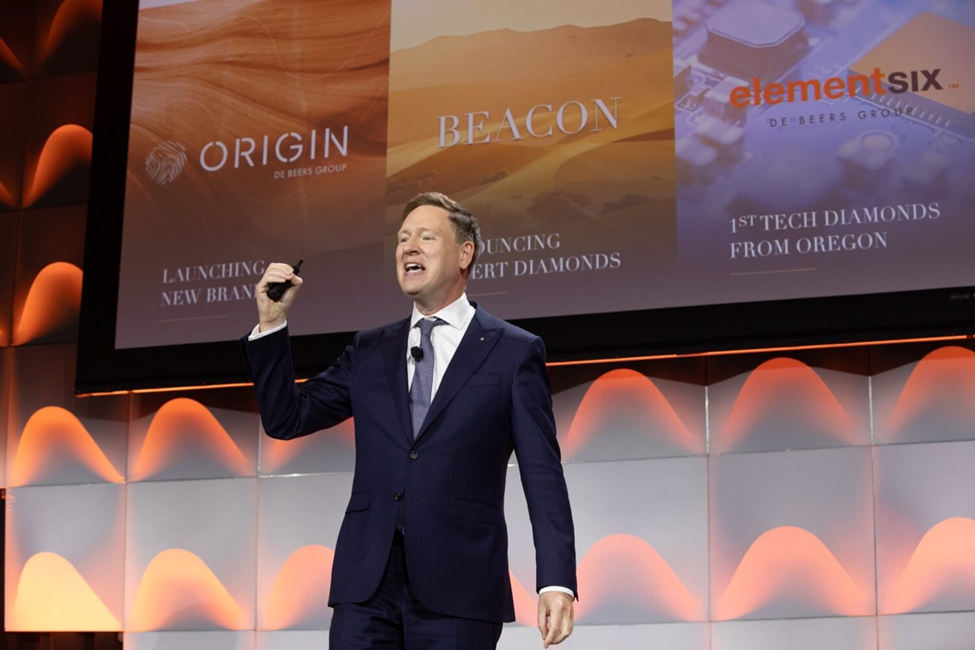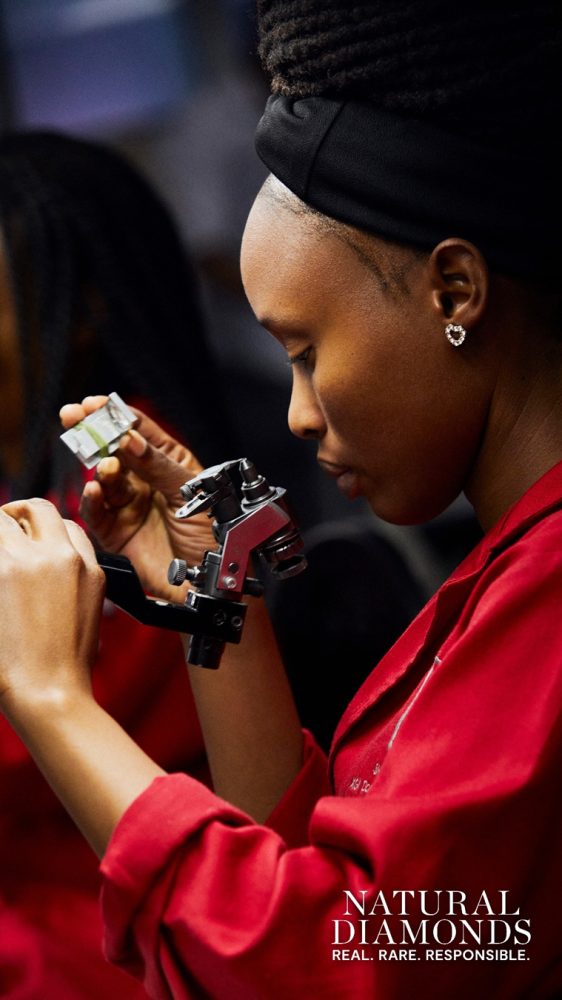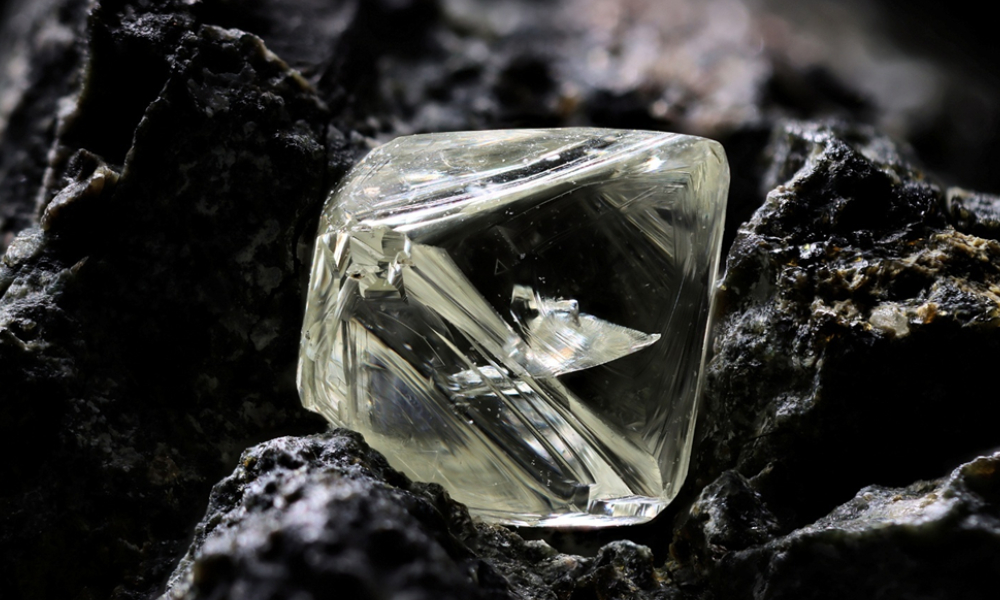Diamond analyst Avi Krawitz explores how the natural diamond industry is regrouping and stepping up its marketing game. From global campaigns to retailer partnerships, the trade is rallying around a shared goal: to reshape consumer perception and restore the sparkle to natural diamonds.
The natural diamond industry is intensifying its marketing efforts in a bid to reclaim market share lost to the rapid rise of lab-grown alternatives.
While various companies and organisations have launched individual campaigns, there’s an increasing push for a more unified strategy to reshape consumer perception and drive demand.
“There’s a lot of content being created about natural diamonds, but it’s up to the trade to get the message out and make it go viral,” said Feriel Zerouki, Senior Vice President of Corporate Affairs at De Beers and President of the World Diamond Council (WDC), during a panel at the World Federation of Diamond Bourses (WFDB) Presidents Meeting in New York.
Zerouki noted that industry members are often quick to circulate negative news, but should apply the same energy to amplifying positive stories about natural diamonds.

The Case for Cohesion
At the WFDB Presidents Meeting, the organisation debuted a new short film — part of an ongoing series promoting natural diamonds — and urged its global network of member companies across 27 affiliated bourses to actively share the content across all relevant platforms.
“Your support is essential in helping us amplify this message globally and highlight the emotional and enduring quality of natural diamonds,” the WFDB stated in announcing the film. The push reflects a broader recognition that marketing has evolved significantly since De Beers retired its iconic “A Diamond is Forever” campaign more than two decades ago.
“Members of the trade love campaigns and expect one-off promotions to drive sales,” said David Kellie, CEO of the Natural Diamond Council (NDC). “But the way consumers engage with content has changed. It’s now primarily through their phones and social media, which means we need to build audiences — and budgets — to get the right message in front of the right people. Everyone in the industry can play a role in that.”
Budgetary Pressures
While posting on social media may seem cost-free, developing impactful campaigns and ensuring they reach the right audiences requires significant financial investment — something the industry is currently struggling with.
The Natural Diamond Council (NDC), responsible for global marketing of natural diamonds, has seen its budget slashed by 80% over the past two years. The drop is largely due to the withdrawal of Russian miner Alrosa, following the outbreak of the war in Ukraine.

In search of long-term solutions, Angola’s Ministry of Mineral Resources, Petroleum and Gas will host a summit on 18 June, bringing together government ministers and industry leaders to explore new funding models. One proposal under consideration is to earmark a portion of rough diamond import revenues for the NDC — a mechanism that would require multiple layers of government approval.
Though specifics remain unclear, there are expectations that the Luanda summit could lay the groundwork for a more sustainable financial model to support global marketing efforts.
Restoring adequate funding, NDC CEO David Kellie has noted, would enable the NDC to sponsor content across key social media platforms, appear where consumers are actively searching — such as on Google — and support large-scale educational initiatives for retail sales teams worldwide.
Retail Partnerships
Amid broader funding challenges, De Beers has significantly ramped up its own marketing investment. The company is spearheading a new beacon jewellery concept, Ombré Desert Diamonds, featuring designs inspired by desert tones — from warm whites to champagne and amber hues.
The goal is to create a trend that others in the industry can tap into, echoing past successful “beacons” like the three-stone and eternity rings. De Beers is providing marketing materials to participating retailers and promoting the concept through digital and media campaigns.
To further expand reach, De Beers has partnered with major retailers across key markets: Signet Jewelers in the US, Chow Tai Fook in China, and Tanishq in India. It has also tailored programs for independent jewellers in both the US and India.
The De Beers–Signet collaboration, ‘Worth the Wait,’ launched in October 2024, aims to reposition natural diamonds within the US bridal segment — an area where lab-grown alternatives have gained surprising ground.
With more than 2,300 stores across the country, Signet brings the scale needed to amplify the campaign. A key focus has been training its 18,000 sales associates in natural diamond storytelling — an effort De Beers executives say remains essential to the initiative’s success.
Focus on Education
Many in the industry believe that misinformation—or simply a lack of information—at the point of sale has played a significant role in the rise of lab-grown diamonds. According to De Beers research cited by Sally Morrison, Natural Diamonds Marketing Lead at De Beers, 80% of consumers enter jewellery stores intending to buy a natural diamond, yet often walk out with a lab-grown alternative. The reason? Lab-grown diamonds offer more size for less money, and for untrained sales associates, that’s an easier pitch.
“Education is key,” said Lisa Bridge, CEO of Ben Bridge Jewelers, during the WFDB panel. “Salespeople don’t want to look bad in front of customers. They need the tools to provide the right information.”
To address that need, the Natural Diamond Council (NDC) recently launched the Diamond Learning Center—a free, centralised platform offering educational resources to help retail teams better understand and communicate the value of natural diamonds.
Both the NDC and De Beers are urging the trade not only to share their consumer-facing content but also to spread awareness within the industry that these educational tools exist and are readily available.
“The WFDB has a role to play in educating retailers, Morisson stressed.
Encouragingly, the trade appears to be responding. From the WFDB’s own video campaigns to the upcoming Luanda summit—and initiatives by organisations like the Antwerp World Diamond Centre (AWDC) and the Gem & Jewellery Export Promotion Council (GJEPC)—momentum is building.
As the battle for consumer loyalty intensifies, industry leaders are rallying around a shared objective: to elevate the image and value of natural diamonds through consistent marketing, strong partnerships, and a renewed focus on education.
After years of calling for more coordinated marketing, the industry finally seems to be mobilising. While efforts may still appear fragmented, there is growing recognition that everyone has a role to play in spreading the message. With a renewed sense of urgency, there is hope that the message will soon begin to resonate.

Avi Krawitz is the Founder of ‘The Diamond Press’ and a leading content creator and consultant in the diamond industry. He is widely recognised for his insightful analysis and storytelling, offering clarity to both industry professionals and curious consumers navigating a complex and evolving market. See more of Avi’s work at www.thediamondpress.com

